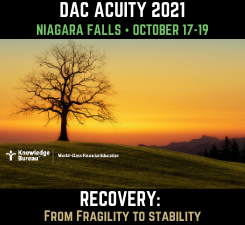New Minimum Tax and Career Extension Credits: Details Required

Evelyn Jacks & Walter Harder
Knowledge Bureau has been looking closely at proposed tax and economic changes on the various party platforms, leading up to the September 20 election. The object is to delve into tax proposals that beg more detail, to enable a thoughtful exchange with candidates. This week: two proposals of interest to pre-retirees, many of whom are experiencing a delayed retirement in an uncertain time.
The backdrop: According to Statistics Canada, the share of Canadians aged 65 and older who continue to work has almost doubled since 1995. Until recently, for about half of them, it’s a matter of choice; for the other half, they simply need the money. Now as the continued uncertainty of pandemic recovery exasperates the potential for early retirements, there are several questions advisors may be fielding from their clients: Has my retirement horizon changed? When can I afford to retire now? Will things cost more when I do? How much will my savings be eroded by taxes? Have I saved enough to take care of my survivors?
Two election proposals by the Liberal Party are of interest in answering some of those questions, but both require more detail from the candidates:
A Minimum Tax on Taxable Income. The proposal to introduce a second minimum tax in Canada also spells new complexity. Canada already has an Alternative Minimum Tax (AMT). This new minimum tax would amount to 15% on taxable income over the top tax bracket ($222,661 in 2022). The Parliamentary Budget Officer notes that this is expected to bring in $1.7 Billion.
This provision, which targets excessive use of non-refundable tax credits and deductions from taxes payable. The donations tax credit is the one that has the best chance of reducing high taxable income levels, compared to other available non-refundable tax credits. Here’s the problem: the new minimum tax could well affect philanthropic seniors with high incomes the most, not just on giving during their lifetime but on final returns at death, as well.
It begs the question of candidates: how offensive are large one-time giving opportunities that improve societal goals at the expense of tax costs to the government? Are these activities we wish to discourage?
It is interesting to note that by comparison to the existing Alternative Minimum Tax provision (see Form T691), there appears to be no carry over provisions to offset regular taxes in future years. However, this new minimum tax could affect the AMT carry over provision applied to regular taxes payable. Some planning will be required to preserve that AMT carryover if the new minimum tax applies. Complicated? You bet!
Dr. Jack Mintz, who will be speaking the Virtual DAC 2021 on October 18, says the simpler approach is to take the existing minimum tax and adjust it to differentiate those with more than $220,000 in income. He adds, “I think the donation credit clawback will get a lot of pressure from the charitable sector if the Liberals try to include it as an adjustment. Most donations come from the wealthy.”
The Career Extension Tax Credit. Mirroring a similar credit available in Quebec, the non-refundable tax credit would be calculated for those age 65 and older, as follows:
- 5% of employment income above $5000 and below $16,000, for a maximum of $1650.

- If employment income is between $16,000 and $35,650, the credit is 15% of $11,000 or $1650.
- for those with income greater than $35,650, the credit is reduced by 5% of every dollar earned above this.
If elected, the provision would come into effect January 1, 2022. In 2021-2022 it is expected to cost $161 Million; a total of $2.7 Billion over 5 years, according to the Parliamentary Budget Officer.
On the good news side, this provision will help offset some of the increasing costs of CPP premiums for those who are working and not yet receiving a retirement benefit. If the incentive is to keep seniors working, it may make a difference to some.
Unfortunately, however, the credit will add complexity to the tax returns of seniors who also face clawbacks of the Age Amount when net income is over $38,893. Further, from $38,893 to $68,650 there appears to be a double clawback for working seniors. To keep more of both credits, continued RRSP planning to age 71 is important for older working Canadians.
Questions for the candidates: How much more money will I have in my pocket after this provision? How much more will I have to pay into the CPP? Will my CPP retirement benefit reduce this credit?
Bottom Line. There are many details to know about how tax proposals such as these will affect various taxfiler profile groups before voters go to the polls. For GenX and Boomer taxpayers who are attempting to plan certainty around their retirement income, as well as plan their philanthropic pursuits, seeking clarity from their local candidates as well as their advisors, will be a smart move this fall.
Additional education resources: earn new credentials in retirement planning as an MFA™-Pension & Estate Services Specialist.